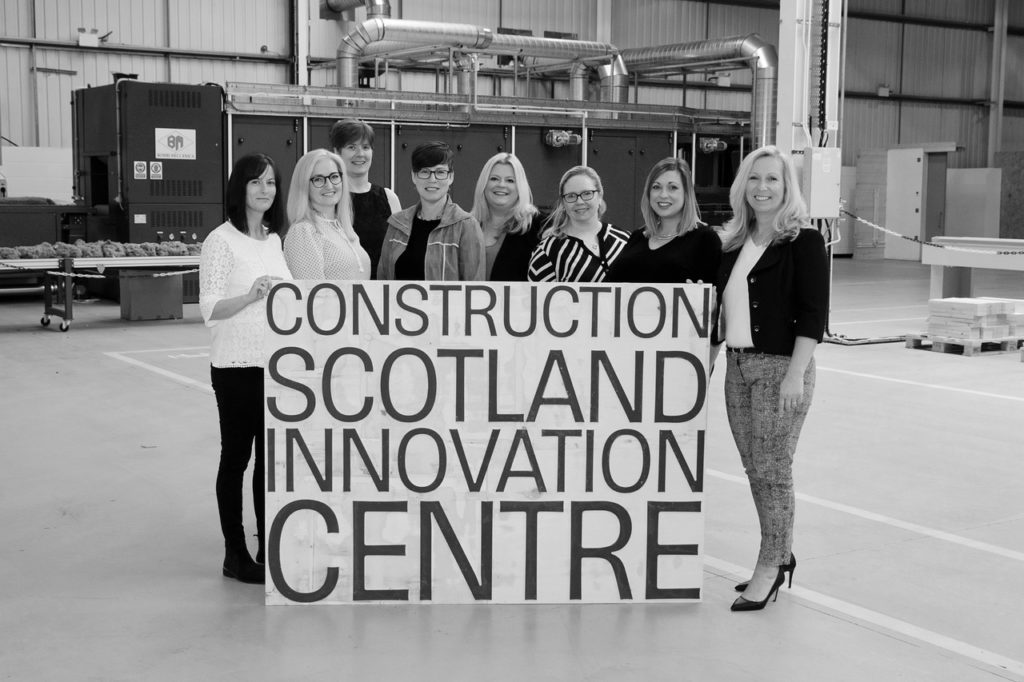
By Rohan Bush, head of public partnerships and future workforce, Construction Scotland Innovation Centre
With so many headlines, films and social media conversations shouting, “The robots are coming!” it’s hard to ignore the implication that one day, machines will replace the entire human workforce and we will all sit twiddling our thumbs.
Whether or not the robots are indeed on their way – and some are already here – the primary ingredient to making the future as bright as possible is still people.
From defining and challenging technological boundaries to designing new materials or processes, people are vital to the future of every industry. The pressure is on, then, to position construction as a sought-after career that attracts the best talent.
On paper, construction should be an industry of choice for our talented school, college or university leavers. It offers a myriad of opportunities to people with all levels of experience and a diverse range of skills. From roads and railways to homes, concert halls and offices, construction is ubiquitous, varied and fundamental to society. There are so many careers within the industry – the average construction project requires teams of highly-skilled women and men using digital, robotic, project management, logistics, materials and building technologies to deliver on a blueprint which itself has months, sometimes years, of in-depth design, reporting and production behind it.
Furthermore, tomorrow’s construction workforce will be using tools and materials we haven’t even invented yet – what bright young school kid wouldn’t want to be a part of that? Yet despite these exciting truths, we are struggling with an ongoing skills shortage, failing to attract enough talent – especially women – to meet demand both now and for the future.
We need to act now if we want to ensure a strong and growing construction sector. This will require increasing our efforts to attract future workers, who will need to be well-trained, agile, innovative, creative and technologically adept. We must also ensure that employers are equipped to train and develop their workforces as technology evolves.
At Construction Scotland Innovation Centre (CSIC), we have been working with industry partners to help businesses look towards the future with a dedicated mix of support, funding and training opportunities. For some, this is as simple as free training around digital technologies such as Building Information Modelling (BIM). For others it could involve trialling entirely new technologies alongside the need to attract skilled labour.
To encourage future talent, our recent postgraduate MSc Programme supported 16 Masters-level students across Scotland to prepare for a career in construction by aligning their research projects to the challenges of a modernising construction sector. One student’s research found that using lightweight aggregate in concrete design could extend the lifespan of concrete structures by making them less susceptible to damage caused by freezing and thawing. This could reduce construction costs while also having a lower environmental impact.
Companies wishing to engage the future workforce must ensure that they themselves are at the cutting edge of technology. This has the additional benefit of helping them remain competitive and perhaps even unleashing latent innovation from within their ranks. However, the high costs of new equipment and materials can often mean that trialling new ways of working is either unattractive or impossible. Thankfully, we have just the remedy.
Our state-of-the-art Innovation Factory offers anyone within the industry the opportunity to test and trial a range of new technologies and equipment, with support from experts. With equipment ranging from Augmented Reality devices and digital routers to a fully equipped offsite manufacturing cell, companies will be spoilt for choice when it comes to future-proofing their businesses.
CSIC is also leading by example in terms of addressing the industry’s gender imbalance, which I believe is key to securing its future. More than half our team are women, we’ve already achieved a 50:50 gender split on our senior leadership team, and are working towards the same goal for our board by 2019. To that end, we’ve just announced the appointment of three female leaders, including Sara Thiam, regional director of the Institution of Civil Engineers, to our board – perfectly timed with this week’s International Women in Engineering day.
These initiatives are just some of the ways CSIC is working with industry to support the future workforce, but the onus is on all of us to prepare and position the construction industry as the attractive, cutting-edge sector that it could be.








